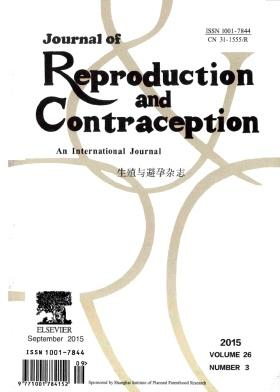Identifying miRNA biomarkers of polycystic ovary syndrome through text mining
IF 0.7
4区 医学
Q4 OBSTETRICS & GYNECOLOGY
引用次数: 0
Abstract
Objective: Polycystic ovary syndrome (PCOS) is an endocrine disorder with diverse clinical manifestations that often occurs in women of childbearing age. However, its molecular pathogenesis remains unclear, and this study aimed to identify miRNA targets in PCOS through text mining and database analysis. Methods: First, three different sets of text mining genes (TMGs) associated with “polycystic ovary syndrome”, “obesity/adiposis”, and “anovulation” keywords were retrieved from the GenCLiP3 database, and overlapping genes were selected. Second, Gene ontology annotation and biological pathway enrichment analyses of these overlapping TMGs were performed, followed by protein–protein interaction (PPI) network analysis. Third, genes in the gene module clustered in the PPI were selected to predict potential miRNAs for PCOS via miRNA-mRNA analysis. Results: A total of 4291 TMGs related to three different keywords were obtained through text mining; 72 intersect TMGs were retained among the three gene sets, and 62 TMGs participated in the establishment of the PPI network, of which 18 were aggregated in the gene module. Finally, 11 miRNAs that simultaneously bound to two TMGs (IGF1, ESR1, MAPK1, NAMPT, PIK3CA, and SERPINE1) could be prioritized as targets to study PCOS. Conclusion(s): The discovery of 11 miRNAs (miR-301a-3p, miR-301b-3p, miR-3666, miR-454-3p, miR-130a-3p, miR-130b-3p, miR-4295, miR-190a-3p, miR-5011-5p, miR-548c-3p, and miR-4799-5p) and 6 TMGs, which are associated with the HIF-1 signaling pathway (P = 4.799E-08), could be used as potential targets for PCOS.通过文本挖掘识别多囊卵巢综合征的miRNA生物标志物
目的:多囊卵巢综合征(PCOS)是育龄妇女常见的一种临床表现多样的内分泌疾病。然而,其分子发病机制尚不清楚,本研究旨在通过文本挖掘和数据库分析来确定多囊卵巢综合征中的miRNA靶点。方法:首先,从GenCLiP3数据库中检索与“多囊卵巢综合征”、“肥胖/肥胖”和“无排卵”关键词相关的三组不同的文本挖掘基因,并选择重叠的基因。其次,对这些重叠TMG进行基因本体论注释和生物途径富集分析,然后进行蛋白质-蛋白质相互作用(PPI)网络分析。第三,通过miRNA mRNA分析,选择PPI中聚集的基因模块中的基因来预测PCOS的潜在miRNA。结果:通过文本挖掘,共获得4291个与三个不同关键词相关的TMG;在三个基因集中保留了72个交叉TMG,62个TMG参与了PPI网络的建立,其中18个TMG聚集在基因模块中。最后,同时与两种TMG(IGF1、ESR1、MAPK1、NAMPT、PIK3CA和SERPINE1)结合的11种miRNA可以优先作为研究PCOS的靶标。结论:11种miRNA(miR-301a-3p、miR-301b-3p、iR-3666、miR-454-3p、miR-130a-3p,miR-4295、miR-190a-3p、miR-5011-5p、miR-548c-3p和miR-4799-5p)和6种TMG的发现可作为PCOS的潜在靶点,它们与HIF-1信号通路相关(P=4.799E-08)。
本文章由计算机程序翻译,如有差异,请以英文原文为准。
求助全文
约1分钟内获得全文
求助全文
来源期刊

Reproductive and Developmental Medicine
OBSTETRICS & GYNECOLOGY-
CiteScore
1.60
自引率
12.50%
发文量
384
审稿时长
23 weeks
 求助内容:
求助内容: 应助结果提醒方式:
应助结果提醒方式:


